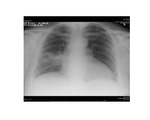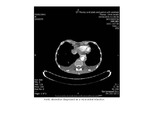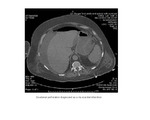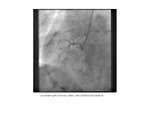Purpose
To investigate the role of imaging in patients who have been certified as having died from myocardial infarction under the age of 75 with in 30 days of hospital admission from May 2014 to May 2016
Methods and Materials
The records of 42 patientsunder the age of 75 (30 male average age 62.8 years,
range 44-74,
12 female average age 64.4 years range 52-74) were examined.
These patients had been certified as having died from a myocardial infarction in a group of three linked hospitals covering a population in excess of 750,000 within 30 days of hospital admission from May 2014 to May 2016.
Imaging ,
biochemical,
symptom and ECG evidence were retrospectively examined
Results
Length of stay ranged from less than 1 day to 17 days (mean 4.4 days).
Of the 42 patients 9 patients were classified as having died from an ST elevation myocardial infarction and 33 from a Non ST myocardial infarction.
Examination of the Non-ST elevation group demonstrated that 10 patients suffered from an out of hospital cardiac arrest or collapse and that 10 patients had other diagnoses including,
aortic dissection,
abdominal perforation,
oesophageal carcinoma,
metastatic lung carcinoma,
severe aortic valve disease and stroke
Of the...
Conclusion
This study demonstrates that imaging of the patient is important to exclude non-cardiac disease in suspected myocardial infarction it also shows that in the majority of patients who are admitted to hospital with presumed myocardial infarction there is time to carry out both cardiac and non-cardiac examinations as well as chest X ray and echocardiography,
even in severely ill patients.
Only a minority of these patients underwent cardiac catheterization and coronary angioplasty,
as most of the patients were too unwell for invasive investigation.
Cardiac CT...





